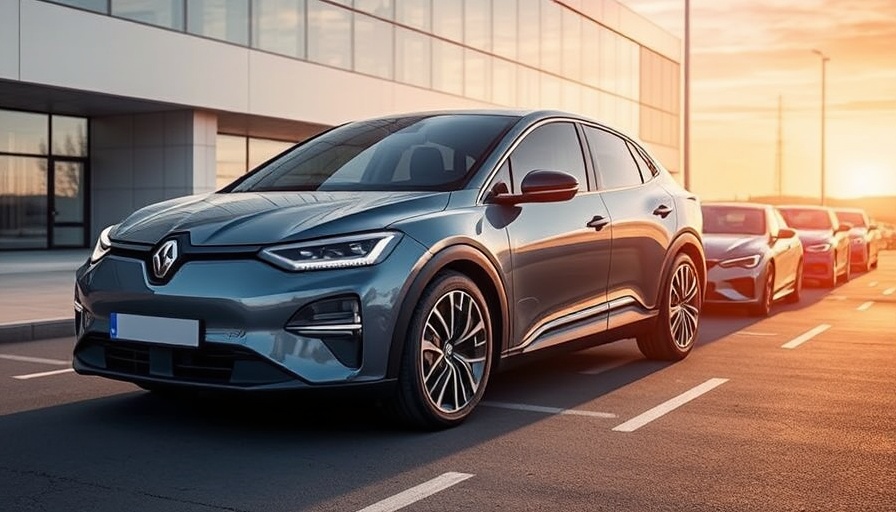
Boost in European EV Sales: A Promising Trend
Europe's marketplace for electric vehicles (EVs) is undergoing a transformative surge, as recently reflected in registration numbers from August 2025. With approximately 246,000 plug-in vehicles registered, the numbers signify a striking 36% year-over-year growth. Despite an overall stagnant auto market, growth in the EV sector outpaced expectations, demonstrating the increasing consumer shift towards sustainable mobility.
Breaking Down EV Market Dynamics
While the total market volume remains relatively flat, at about 8.7 million units sold so far in 2025, the rise of battery electric vehicles (BEVs) and plug-in hybrid electric vehicles (PHEVs) has been thrilling. Last month alone, BEVs achieved a vital milestone, capturing a 21% share of the European car market, equivalent to an impressive 31% when including PHEVs. Yet, what might have gone unnoticed is the sharp rise in PHEV registrations, which shot up 56% year-over-year. This increase suggests not just a fleeting trend but a more permanent cultural shift towards electrification across various demographics.
Market Movements: Leaders and Emerging Players
The Tesla Model Y once again leads the pack in sales, despite a notable design critique compared to its predecessors. While it racked up 8,371 sales in August, questions linger about its ability to maintain momentum in an increasingly competitive landscape. Following closely was Skoda's Elroq, performing robustly with 6,385 registrations; it positions itself as a compelling option amidst the competition.
Moreover, the Tesla Model 3 remains a strong contender, reporting a 15% increase in sales compared to last year, demonstrating that consumer interest in Tesla vehicles remains unabated.
The Path Ahead: Forecasting and Future Trends
If current growth trends persist, we could see BEVs capturing as much as 62% of the market by 2030, with a nearly ambitious target of approaching complete electrification by 2033. It's noteworthy that a larger systemic shift appears to be taking root, with full hybrids (HEVs) representing a noteworthy 33% of sales in August. This hints at an evolving preference for electrical solutions among consumers, possibly hinting at a long-term decline in traditional combustion engine vehicles.
The Broader Picture: EV Adoption Across the EU
The electric vehicle sector is not only witnessing accelerated sales but also improving customer sentiment. As countries like Germany break 39% growth in BEV registrations, and the European market swings away from traditional petrol and diesel engines—now controlling less than 37.5% of total sales—we're likely to witness a significant paradigm shift in how consumers view their transportation choices.
Encouraging Sustainability: The Broader Context
This positive trend is critical, especially underlining consumer commitment to sustainable technologies to combat environmental issues. Stakeholders from various sectors, including automotive manufacturers and policymakers, must coordinate efforts to facilitate this transition. As highlighted by the International Council on Clean Transportation (ICCT) and the European Automobile Manufacturers' Association (ACEA), the combination of increased hybrid adoption and the pivot to BEVs suggest an ongoing evolution that could redefine Europe's auto industry.
Call to Action: Engage with the EV Movement
As these numbers illustrate the rapid ascent of EVs in Europe, it's imperative to stay informed about this electric revolution. Whether you're an aspiring EV owner, an environmental advocate, or simply interested in the international shift towards sustainability, engaging with this movement not only fosters informed decision-making but also encourages ongoing developments that support greener technologies. Explore your options, stay up-to-date on news, and consider how you can participate in this electrifying shift towards a more sustainable future.
 Add Row
Add Row  Add
Add 




Write A Comment